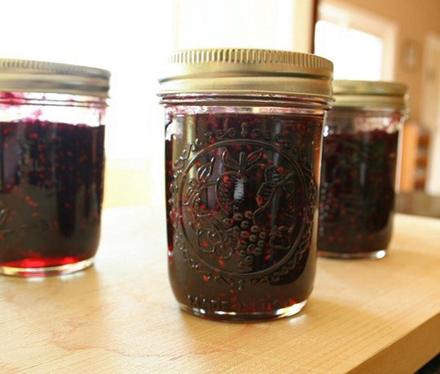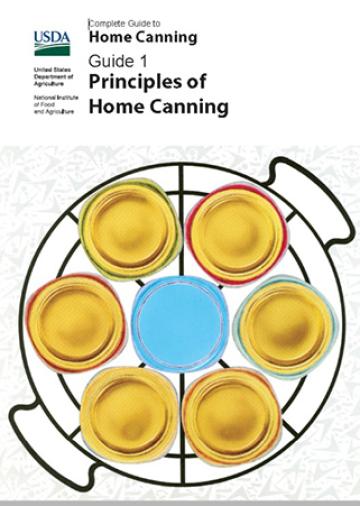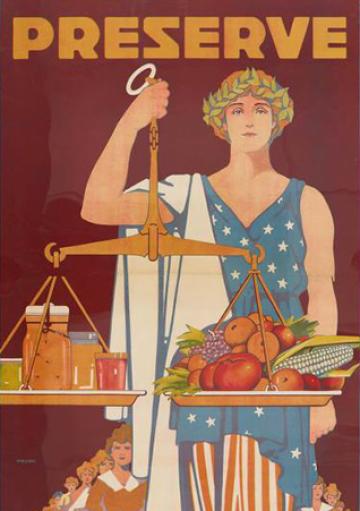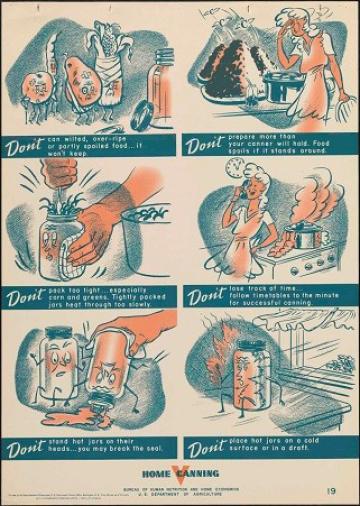Food Preservation Is In The Can

Food preservation through canning has been a longtime practice in the United States. Americans ate canned food while embarking on long journeys, such as the westward expansion movement. Canning also helped America in times of need, specifically during wartime when food was in short supply. USDA's Bureau of Home Economics encouraged and instructed homemakers to preserve food through canning to ensure families and troops were fed. Viewing the USDA National Agricultural Library’s (NAL) exhibit “How Did We Can” gives us an appreciation of how canning evolved from a way to feed French troops in Napoleon’s army, to how today’s food preservation empowers us to reduce waste and capture food at its peak ripeness.
Food preservation is an ancient practice. In the Historical Origins of Food Preservation, Brian Nummer stated, “Food by its nature begins to spoil the moment it is harvested. Food preservation enabled ancient man to make roots, live in one place and form a community. He no longer had to consume the kill or harvest immediately, but could preserve some for later use. Each culture preserved their local food sources using the same basic methods of food preservation.” Canning includes curing, pickling, freezing, fermenting, and drying.



You May Also Like

